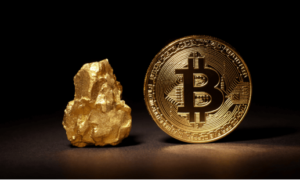By Andy Flury, CEO of AlgoTrader .
Over the past year it seems as though a threshold has been breached: a number of high profile financial institutions, including Goldman, JPMorgan, Citi and BNY Mellon, have announced plans to launch digital asset services. This increased institutional interest is perhaps unsurprising. In contrast to the overall economic outlook, the prices of key digital assets like Bitcoin rose sharply in 2020 and 2021 while the coronavirus pandemic raged, prompting greater interest from asset managers, hedge funds and other institutional investors.
Equities and digital assets: Two fundamentally different markets
This has led several commentators and industry insiders to compare digital asset trading to the trading of traditional equities. They point out that liquidity in digital asset markets is far more fragmented than in conventional equities markets. A centralized exchange like Nasdaq, for example, captures almost all spot trading of US tech stocks, such as Apple, Microsoft or Amazon. By contrast, even a major digital asset exchange like Coinbase, which is the largest player in the US market, only captures about 2% of the global trading volume of Bitcoin. Indeed, it is in this light that Coinbase’s recent Nasdaq listing and $85 billion valuation should be viewed.
Of course, the fundamental reason for these differences is that traditional equities are primarily traded through centralized exchanges in specific jurisdictions. While some companies may choose to dual-list their stock on two exchanges in order to reach investors in a different region or as the result of a merger, this is the exception rather than the rule. For digital assets, on the other hand, no principal exchange exists in each territory. As a result, liquidity is spread over myriad spot exchanges, which total over 300 globally, joined by an array of other venues such as crypto brokers, OTC desks, market makers and DeFi exchanges.
FX market a better comparison?
Thus, given the stark structural differences between the digital asset and equities markets, the foreign exchange (FX) market is a more instructive comparison. Similarly, to the digital asset market, FX trading is global and decentralized, with transactions occurring mainly via OTC trades which are not tied to any specific physical location.
Both digital assets and FX were forged from a historical “big bang” moment that set the markets on their current course. In the case of digital assets, this happened when the Bitcoin Whitepaper was published by Satoshi, which demonstrated that it was possible to use cryptographic techniques to store and exchange value trustlessly without requiring a centralized intermediary. This idea inspired a new financial movement and within a very short time frame, a new global, decentralized asset class was created with no direct historical ancestors.
In the case of the FX market, it was the collapse of the centralized system of currency control that set-in motion the chain of events that led to the FX industry of today. After the Bretton Woods agreement in 1944, a system was put in place whereby the US dollar was directly pegged to the value of gold, while other currencies were pegged to the dollar at a fixed ratio. While this created a relatively stable international financial system, it gave national governments very few policy options in times of economic disruption or war. The first fissure came in 1967, when the UK government devalued Sterling against the dollar in response to the Suez Crisis and the marked rise in oil prices that followed. The gold peg was then abolished by US President Richard Nixon in 1971 in an effort to combat high inflation and unemployment domestically. Over the next 30 years, all Western governments abandoned fixed-exchange rate systems, leading to the floating system we know today. The trading environment for currencies was enhanced by the advent of electronic trading and the internet, which created the speed and dynamism of the modern FX market.
Thus, similarly to the digital asset market, FX trading developed organically in a decentralized fashion in response to events rather than being carefully designed by regulators and policymakers. This led to an innovative, but highly fragmented market. Like the crypto market, the same asset, such as a currency pair, is traded through multiple market makers or venues simultaneously, while rates will often vary according to localized supply and demand at a specific venue. As a result, FX traders typically connect via APIs to multiple venues in order to get a more comprehensive view of pricing and access greater market depth.
Indeed, the term “crypto exchange” is likely to be misleading for traders more accustomed to traditional finance. Cryptocurrency exchanges share far more similarities with the Electronic Communication Networks (ECNs) common in the FX world than with centralized stock exchanges, even though both stock exchanges and crypto exchanges use central limit order books (CLOB). Like crypto exchanges, ECNs automatically match the buy and sell orders of traders and brokers for a fee, but they do not have any exclusive right to list or facilitate the trade of any given FX product in a particular jurisdiction.
Outlook
In many respects, when comparing the digital asset and FX market, history is repeating itself, but far faster. While algorithmic trading of FX began in earnest around the turn of the millennium, the pace of progress was comparatively modest. This was a time when broadband internet was in its infancy and both venues and market participants had far less experience of establishing and maintaining automated digital trading infrastructure. Teething problems were inevitable and it was not uncommon for FX servers to crash, even at major institutions. In comparison, the speed at which the digital asset market is maturing – developing from a niche curiosity to an increasingly viable asset class for institutions within 2-3 years – is extraordinary.
With that said, given the structural similarities mentioned above, what aspects of the FX market might also emerge in the digital asset space?
With greater regulatory certainty and heightened institutional interest, we are likely to see an increase in both the number of liquidity venues and the range of financial products available. Like the modern FX market, a wide selection of both vanilla and exotic options is likely to develop on the crypto derivatives market. In this respect, structured products and ETFs based on crypto and digital assets, such as the Bitcoin-US dollar certificate provided by the Swiss crypto bank SEBA, could be a harbinger of what will follow. Such products will integrate digital assets into traditional markets and will likely be augmented by lock-in and lock-out options and other exotics.
In combination, the increased liquidity and additional instruments on the market are likely to change the motivation and focus of many digital asset traders. Whereas currently, assets like Bitcoin have some similarities to an alternative asset market in that a large percentage of investors are buying to hold, in future, a higher proportion of asset holders will be more active professional traders.
Conclusion
Due to its global, decentralized and fragmented nature, the digital asset market shares far more similarities with FX than equities. This suggests that while liquidity is likely to massively grow in the in the coming years, it will remain fragmented across myriad venues. This will pose challenges for professional traders, who will require specialized software and tailored execution platforms like AlgoTrader to automatically connect to a wide range of venues. However, diversity also presents opportunities: As the market develops, there will be increasing scope to execute more sophisticated trading strategies by taking advantage of derivative instruments and exotic options.

































